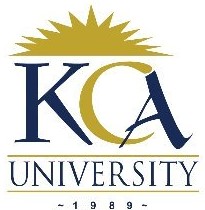 UNIVERSITY EXAMINATIONS: 2014/2015
UNIVERSITY EXAMINATIONS: 2014/2015
ORDINARY EXAMINATION FOR THE BACHELOR OF SCIENCE
IN INFORMATION TECHNOLOGY
BIT 2303 DISTRIBUTED SYSTEMS
DATE: APRIL, 2015 TIME: 2 HOURS
INSTRUCTIONS: Answer Question ONE and any other TWO
QUESTION ONE: 30 MARKS (COMPULSORY)
a) Define the terms Message Passing and Remote Procedure Call, highlighting at least
one similarity and one difference. (6 marks)
b) By the use of well labeled diagram define the terms a Distributed System and a
Centralized System, highlighting the differences. (6 marks)
c) Describe the components that make a Distributed System. (6 marks)
d) Discuss any four security requirements in a Distributed System, highlighting the
threat to each threat. (6 marks)
e) Discuss the ring algorithms for conducting elections when the primary server fails
(6 marks)
QUESTION TWO: 20 MARKS
a) By use of a well labeled diagram to describe the element of an RPC mechanism
(8 marks)
b) By use of diagrams, discuss the similarities between local procedure calls (lpc) and
remote procedure calls (rpc) (6 marks)
c) Define the term replication (2 marks)
d) Discuss the following types of replication (4 marks)
i) Active replication
ii) Passive replication
QUESTION THREE: 20 MARKS
a) Differentiate between the NOS and DOS (4 marks)
b) Discuss the similarities between Procedure Calls (PC) and Remote Procedure Calls
(RPC). (4 marks)
c) With the help a diagram illustrate what a message is explaining its structure 7 marks
d) Describe the basic file replication protocol (5 marks )
QUESTION FOUR: 20 MARKS
a) Define the term file service (2 marks)
b) Discuss four properties that a DS resource sharing mechanism must have in order to
provide concurrency transparency (8 marks)
c) Define the following concept used in synchronization (4 marks)
i) Skew
ii) Clock drift
iii) UTC
iv) Internal synchronization
d) Describe the Berkeley algorithm for achieving synchronization in clocks within
Distributed Systems. (6 marks)
QUESTION FIVE: 20 MARKS
a) Using an appropriate example differentiate between the following terms used in IPC.
(2 marks)
i) Idempotent Operations
ii) Non-idempotent Operation
b) Explain briefly how non-idempotent operations are solved. (4 marks)
c) Describe the following type of programmed threats in Distributed Systems and
discuss how avert them. (6 marks)
i) Trojan horses
ii) Logic bombs
iii) Trap
iv) Viruses
d) Using well labeled diagrams, differentiate between synchronous communication and
asynchronous communication. (4 marks)
e) Describe the following Distributed File Service requirements (4 marks)
i) Concurrency
ii) Heterogeneity
iii) Efficiency
iv) Security
